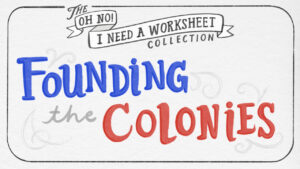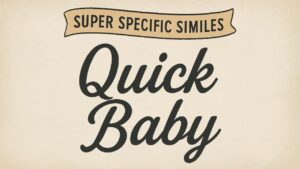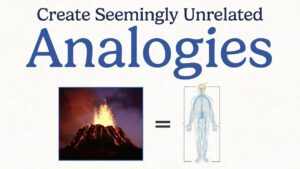Grade 3
-
Language
-
Reading: Fluency
-
Reading: Informational
-
Reading: Literature
-
Speaking & Listening
-
Writing
CCSS ELA Standard: 3.W.5
With guidance and support from peers and adults, develop and strengthen writing as needed by planning, revising, and editing.

Founding The Colonies
13 colonies activities including a word search and task cards packed with facts. Plus, students will create their own colony with a name, story, and map!

That Quote’s Not Quite Right: Albert Einstein
When I see a quote, I often think, “That’s not quite right!”

Halloween Problems and Solutions
When we try to solve a problem, sometimes we end up creating new problems. Which lead to new solutions. Which lead to new problems.

St. Patrick and Other Legends
How would real people feel about the legends that have been created about them?

Getting Specific With St. Patrick’s Day Writing
Let’s take a starting phrase about St. Patrick’s Day and get specific. No, even more specific!

Mother’s Day Cards
Let’s write the cleverest Mother’s Day cards you’ve ever seen!

Super Specific Similes – Strong Uncle
Let’s make this simile about a strong uncle even more specific.

Super Specific Similes – Slimy Broccoli
Students will make this slimy broccoli simile seriously specific.

Super Specific Similes: Quick Baby
Let’s make this simile about a quick baby even more specific.

Super Specific Similes: Loud Class
Let’s make this simile about a loud class super specific!

Super Specific Similes: Stinky Seaweed
Students will make this simile about stinky seaweed super specific.

Think Like An Author: Hemingway vs Dickens
What if your students rewrote Dickens in the style of Hemingway and vice versa?

Thanksgiving Photo Writing
Starting with an old-timey photo, students will write from a particular item’s point of view.

Back to School: Rewriting The Beatles’ “Help!”
Can your students come up with a one-syllable word to sum up their time away from school? And then rewrite The Beatles’ song Help!?

Writing About Art: Burning of the Houses of Lords and Commons
Students will create a pretty darn interesting poem about Burning of the Houses of Lords and Commons.

Writing About Art: Impression, Sunrise
Students will create a surprisingly good poem based on Monet’s Impression, Sunrise.

Writing in Pilish
Pi can go beyond circles! What if you wrote using the digits of pi as your guide?

Writing About Art: Chōshi in Shimosha
Get your students writing some pretty darn impressive poetry based on Japan’s most famous artist.

Writing About Art: Wanderer Above the Sea of Fog
Students will look closely at a piece of art and then write a structured poem about it.

Writing About Art: Twilight in the Wilderness
Students will write about a beautiful painting from Frederic Edwin Church.

Fancier Figurative Language: Use the Opposite
Let’s start with “As cold as fire.”

Fancier Figurative Language: Move the Simile
What if we started a sentence with the simile?

Fixing Shakespearean Run-Ons
Can your students help The Bard? We’ll fix five Shakespearean run-ons in three different ways.

Writing Technique: 3 Dependent Clauses
A specific technique to help students add some spice to their writing. We’ll be writing sentences with three dependent clauses.

Writing Technique: Contrast With Synonyms
A specific technique to help students add some spice to their writing. We’ll be contrasting two ideas using synonyms.

Writing Technique: Opposite Adjectives
A specific technique to help students add some spice to their writing. We’ll be using antonyms to describe the same topic!

Writing A Thanksgiving Letter
What if an inanimate object could express thanks for a special person in your life? What would it write?

Ambiguous Sentences
Rather than just demand that students “write clearly,” we’ll explore the hazards of poorly written sentences… and maybe create one of our own!

Fancier Figurative Language: Advanced Repetition
Is your students’ use of repetition limited to, “The girl was very, very, very fast.”? Let’s borrow some ideas from Shakespeare!

The Personalities of Rocks
What would an igneous rock be like? Would it get along with a sedimentary rock? Could they handle the hot personality of a metamorphic rock?

Building Creative Analogies
We’ll take two seemingly unrelated pieces of content (say volcanoes and the human body) and then build analogies to connect the two ideas. In the end, students can create a skit, comic, or story relating the two concepts.

Passive to Active Voice
In this lesson, students will not just fix passive sentences, but break active sentences as they learn to put the star of the sentence first.

Improving Presentations 2: Planning The Outline
After watching some great presenters, let’s outline your presentation!

Literary Technique: Juxtaposition
Put a grumpy character next to a joyful one and they make each other stand out even more. Opposites are powerful!

Ways to Start a Sentence – Part 3
We’ll show students how to add more variety to their writing by starting sentences with gerunds, participle phrases, and absolute phrases.

Ways to Start a Sentence – Level 2
We’ll show students how to add more variety to their writing by starting sentences with a reason, a prepositional phrase, and a simile.

Ways to Start a Sentence – Level 1
“Add more variety!” I’d say to my class. But I never really knew what this actually meant. Suprise! This bad advice never improved students’ writing. In these videos, students learn nine specific ways to add variety just by changing the beginning of their sentences. This was easily one of my students’ favorite writing tools – because it actually helped them.

Teach Non-Fiction Writing Structure With Fractals
Did you ever notice that the structure of an essay is very similar to the structure of a paragraph? Hmm…